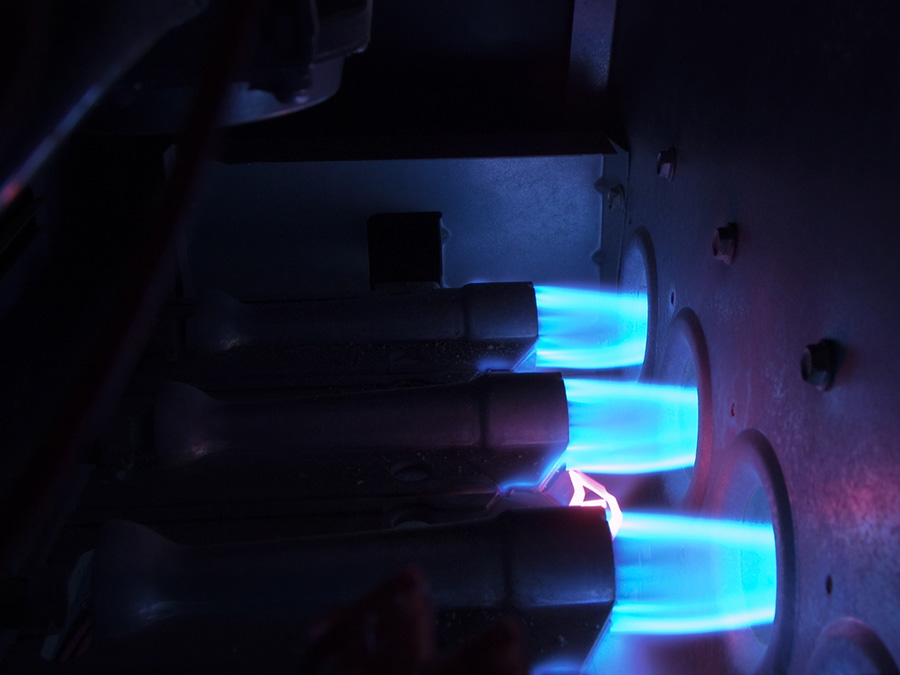Serving Nashville and the Middle Tennessee Area

What The Maynard Man Needs You to Know About Gas Furnace Heat Exchangers
Your gas furnace might be what you think of when it comes to staying warm, but it’s the heat exchanger inside that really makes it all possible. This critical component works quietly behind the scenes to safely transfer heat into your home’s heating system. But if something goes wrong—especially a crack or corrosion—the risks go beyond comfort. A damaged heat exchanger can leak dangerous carbon monoxide into your living space, putting your family’s health at risk. That’s why The Maynard Man wants you to know exactly what this part does, how to spot trouble, and what you can do to protect your home. With a little understanding and the right preventive care, you can keep your furnace running safely and efficiently all season long.
What Is a Heat Exchanger?
A heat exchanger is one of the most important parts of your gas furnace—it’s the component that actually makes your home warm. Made of metal, the heat exchanger is a sealed chamber or series of coils that absorbs heat from the combustion process. Once the burners ignite, hot gases pass through the exchanger, and the metal walls heat up. Then, your furnace’s blower pushes air across the outside of the exchanger, transferring that heat into your ductwork to warm your home. Just as important, the heat exchanger keeps combustion gases like carbon monoxide and nitrogen dioxide safely contained and vented outdoors. This separation ensures that the air your family breathes stays clean and safe. When the heat exchanger is working correctly, it’s both a heating powerhouse and a key safety feature of your system.
Why Heat Exchanger Issues Are Serious
A cracked or damaged heat exchanger isn’t just a mechanical issue—it’s a serious safety hazard. Because the heat exchanger is responsible for separating harmful combustion gases from the air you breathe, any breach in its structure can allow carbon monoxide to leak into your home. This odorless, colorless gas is extremely dangerous and can lead to serious health problems or even death if left undetected. Beyond safety concerns, a failing heat exchanger can also reduce your furnace’s performance. You may experience poor heating, strange smells, or your system shutting off unexpectedly as a protective measure. The problem is, these issues aren’t always obvious to the untrained eye. That’s why professional inspections are so important—they can uncover hidden cracks or corrosion before they pose a risk to your home.
Warning Signs of a Cracked Heat Exchanger
While some damage to your heat exchanger may go unnoticed without a professional inspection, there are a few red flags every homeowner should know.
Physical or Visual Clues
Keep an eye out for visible signs of wear. Rust or corrosion on the furnace, soot buildup around the burners, or a noticeable crack in the metal chamber can all indicate trouble. Another warning sign is the color of your furnace’s flame—if it’s yellow instead of steady blue, your burner may not be burning cleanly, which could be linked to exchanger damage.
Performance Symptoms
Unusual chemical or burning odors when the heat is running are cause for concern and shouldn’t be ignored. A cracked heat exchanger can also lead to increased carbon monoxide levels—if your detector goes off or you experience flu-like symptoms when the furnace is on, turn the system off immediately and get outside. Other signs include uneven heating or your furnace shutting down frequently, which could be a safety response to a hidden problem.
How to Prevent Damage and Stay Safe
The best way to protect your home from heat exchanger issues is with regular furnace maintenance. Schedule an annual inspection with a licensed professional who can examine the heat exchanger for cracks, corrosion, and early signs of wear. These routine checkups are crucial for catching problems before they become dangerous. In between tune-ups, keep your system running smoothly by replacing your air filters regularly—typically every 1 to 3 months. A clogged filter can restrict airflow and cause the furnace to overheat, which puts extra stress on the heat exchanger. It’s also essential to have carbon monoxide detectors installed throughout your home, especially near sleeping areas. Test them monthly and replace the batteries at least once a year. Most importantly, don’t ignore warning signs—if your furnace smells strange, runs inconsistently, or causes a CO detector to go off, shut it down and call in the pros.
Wrap-Up: Let Maynard Keep Your Furnace Safe
Your gas furnace’s heat exchanger plays a vital role in keeping your home warm and your family safe. Understanding how it works—and knowing the warning signs of trouble—can help you avoid dangerous situations and costly repairs. Regular maintenance and early detection are the keys to long-lasting, efficient heating. If you suspect a problem or just want peace of mind before the next cold snap, contact Maynard Plumbing, Heating, Cooling to schedule a professional furnace inspection today. The Maynard Man is here to help you stay safe, warm, and informed.
Recent News
How to Protect Your Pipes from Freezing During Cold Weather in Nashville
5 Signs Your Water Heater Needs Repair Before Winter Arrives in Nashville
How Regular Drain Cleaning Can Prevent Costly Plumbing Emergencies
High-ROI Home Improvements in Nashville
Energy Efficiency & Indoor Air Quality Blueprint for Tennessee Homes
Home Heating and Cooling Options: Ductless, Mini Split, and Heat Pump Explained
The Ultimate Nashville Home Maintenance Calendar
Schedule Service


